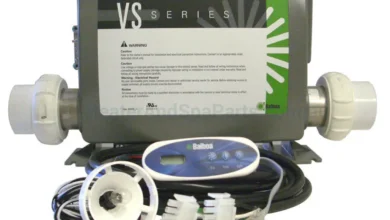The Iconic Singer Sewing Machine at 616 North Escondido, California

The Singer sewing machine has been a cornerstone of American craftsmanship, blending practicality with artistry. Nestled in Escondido, California, the address 616 North Escondido holds a connection to this legendary piece of history. Whether you’re a sewing enthusiast or a lover of vintage collectibles, learning about the legacy of the Singer sewing machine at this location will take you on a fascinating journey.
A Historical Overview of the Singer Sewing Machine
The Singer sewing machine revolutionized textile production when Isaac Merritt Singer invented it in 1851. Unlike its contemporaries, the Singer offered unparalleled efficiency and became synonymous with sewing machines worldwide. By the late 19th century, it wasn’t just a household tool—it was a cultural icon representing innovation and quality.
Today, vintage Singer sewing machines are highly sought after, with models located in unique places, like 616 North Escondido, California, adding a touch of historic charm to their localities.
What Makes 616 North Escondido Special?
This address in Escondido, California, has become an intriguing point of interest, particularly among sewing machine enthusiasts. While it might be a residential or commercial spot now, its connection to vintage Singer sewing machines makes it an artifact of nostalgia. Local antique shops and collectors in Escondido often feature Singer machines that hail from similar storied backgrounds.
The presence of this cultural artifact at 616 North Escondido signifies more than just its utility—it embodies a slice of history. In a city steeped in arts and crafts traditions, owning or visiting such relics adds richness to the community’s tapestry.
Why Are Vintage Singer Sewing Machines So Popular?
- Exceptional Durability: Singer sewing machines, even those over a century old, often remain functional with minor restoration.
- Timeless Design: These machines boast elegant cast-iron bases and ornate designs that blend utility with aesthetic appeal.
- Historical Value: Owning one is akin to owning a piece of industrial history, offering insights into how technology shaped home industries.
- Ease of Use: Despite their vintage status, Singer machines were designed for simplicity, making them a favorite among both beginners and experts.
Singer Sewing Machines in the Community
Escondido, California, has long been a hub for artists and crafters. Local enthusiasts often gather at events or workshops to showcase their skills and celebrate tools that make their art possible. Singer sewing machines from locations like 616 North Escondido play a central role in these meetups, sparking conversations about vintage tools and techniques.
Imagine a local artist restoring a classic Singer machine at this location and using it to create modern masterpieces—such stories bridge the gap between past and present.
How to Identify and Restore a Singer Sewing Machine
If you’ve come across a Singer sewing machine, perhaps at an address like 616 North Escondido, these tips will help you identify and restore it:
- Model and Serial Number: Check for the machine’s serial number, typically engraved on a plate. It helps determine the model and year of production.
- Condition: Examine for rust or missing parts. Basic cleaning often revives its sheen.
- Replacement Parts: Authentic parts for vintage Singer machines are widely available online or at specialty stores.
- Professional Restoration: If the machine needs extensive work, Escondido has a few restoration experts familiar with antique sewing equipment.
Where to Find Singer Sewing Machines in Escondido
- Antique Shops: Many stores around Escondido stock vintage Singer sewing machines, offering a chance to own a piece of history.
- Estate Sales: Keep an eye out for estate sales in Escondido neighborhoods.
- Local Auctions: Auctions often feature rare models of Singer machines, including those with ties to local landmarks like 616 North Escondido.
A Tribute to Timeless Craftsmanship
The Singer sewing machine represents more than functionality—it’s a testament to human ingenuity and dedication. Locations like 616 North Escondido, California, which house or celebrate these vintage machines, are a nod to the enduring legacy of quality craftsmanship.
As we embrace the convenience of modern technology, these relics remind us of a time when machines were designed to last and built to inspire. The story of the Singer sewing machine, whether in Escondido or elsewhere, remains an emblem of progress and artistry intertwined.




